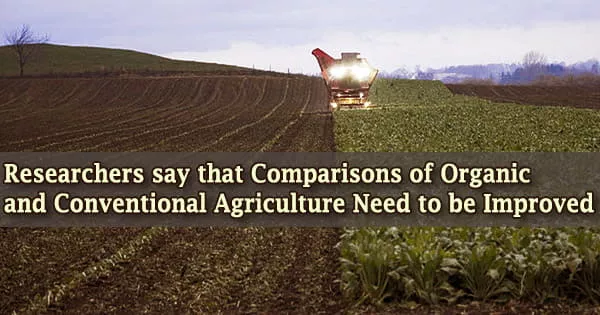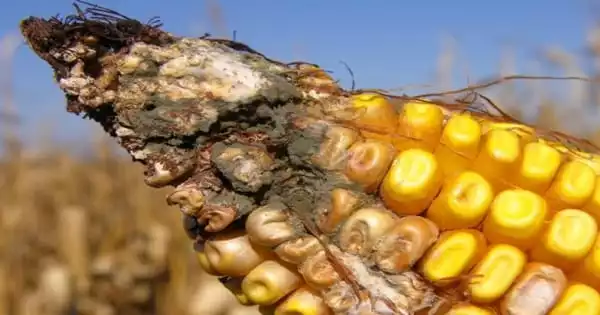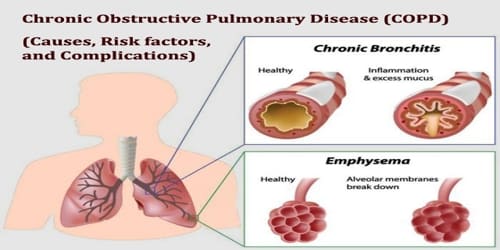Agriculture’s and food’s environmental impacts are widely discussed. However, the most often used technique of study frequently overlooks important elements like biodiversity, soil quality, pesticide impacts, and societal shifts, and these omissions can lead to incorrect conclusions about the virtues of intensive and organic agriculture.
According to a trio of academics who published their findings in the journal Nature Sustainability, this is the case. Life Cycle Assessment (LCA) is the most prevalent method for assessing the environmental implications of agriculture and food.
Organic agriculture, according to some studies, is actually worse for the environment because it produces lower yields and hence requires more acreage to compensate. For example, many publications, including the BBC and others, covered a recent study published in Nature Communications that made this claim.
However, according to three researchers from France, Denmark, and Sweden who published a study of several LCA studies in the journal Nature Sustainability, this application of LCA is excessively naive and overlooks the benefits of organic farming.
“We are worried that LCA gives too narrow a picture, and we risk making bad decisions politically and socially. When comparing organic and intensive farming, there are wider effects that the current approach does not adequately consider,” says Hayo van der Werf of the French National Institute of Agricultural Research.
The health and resilience of ecosystems, for example, are dependent on biodiversity. Intensive agriculture has been found to be one of the key drivers of unfavorable trends such as bug and bird reduction on a worldwide scale. Agriculture takes up more than a third of the world’s land surface, thus any linkages between biodiversity loss and agriculture are crucial.
“But our analysis shows that current LCA studies rarely factor in biodiversity, and consequently, they usually miss that wider benefit of organic agriculture,” says Marie Trydeman Knudsen from Aarhus University, Denmark. “Earlier studies have already shown that organic fields support biodiversity levels approximately 30% higher than conventional fields.”
LCA simply looks at the overall yields. Of course, from that perspective, it’s true that intensive farming methods are indeed more effective. But this is not the whole story of the larger agroecosystem. A diverse landscape with smaller fields, hedgerows, and a variety of crops gives other benefits greater biodiversity, for example.
Christel Cederberg
Another factor to consider is pesticide use. Pesticide use grew by 73 percent globally between 1990 and 2015. Pesticide residues in the ground, water, and food can impair human health, threaten terrestrial and aquatic ecosystems, and reduce biodiversity. Meanwhile, organic farming forbids the use of synthetic pesticides. However, few LCA studies take these factors into account.
Land deterioration and lower soil quality as a result of irresponsible land management are also a concern, however, this is rarely addressed in LCA research. The advantages of organic agricultural practices like crop rotation and organic fertilizer use are frequently disregarded in LCA analyses.
LCA, for the most part, evaluates environmental impacts per kilogram of product. This encourages intensive systems with lower impacts per kilogram but higher impacts per hectare of land.
“LCA simply looks at the overall yields. Of course, from that perspective, it’s true that intensive farming methods are indeed more effective. But this is not the whole story of the larger agroecosystem. A diverse landscape with smaller fields, hedgerows, and a variety of crops gives other benefits greater biodiversity, for example,” says Christel Cederberg of Chalmers University of Technology, Sweden.
Smaller, more diversified systems that are more reliant on ecological processes and tailored to local soil, climate, and ecosystem characteristics are also overlooked by LCA’s product-focused approach. A finer-grained approach to LCA is required.
“We often look at the effects at the global food chain level, but we need to be much better at considering the environmental effects at the local level,” says Marie Trydeman Knudsen. The researchers note in their study that efforts are being made in this area, but much more progress is needed.
Another major flaw is when potential “indirect impacts” are considered, such as presuming that organic agriculture’s poorer yields result in higher carbon dioxide emissions since more land is required.
Another well-known study, led by a researcher at the Chalmers University of Technology, claimed that organic agriculture was bad for the environment because the need for additional land leads to less forest area indirectly. However, it is difficult to account for these indirect impacts.
“For example, consider the growing demand for organic meat. Traditional LCA studies might simply assume that overall consumption of meat will remain the same, and therefore more land will be required. But consumers who are motivated to buy organic meat for environmental and ethical reasons will probably also buy fewer animal-based products in the first place. But hardly any studies into this sort of consumer behavior exist, so it is very difficult to account for these types of social shifts now,” says Hayo van der Werf.
“Current LCA methodology and practice is simply not good enough to assess agroecological systems such as organic agriculture. It therefore needs to be improved and integrated with other environmental assessment tools to get a more balanced picture,” says Christel Cederberg.
















